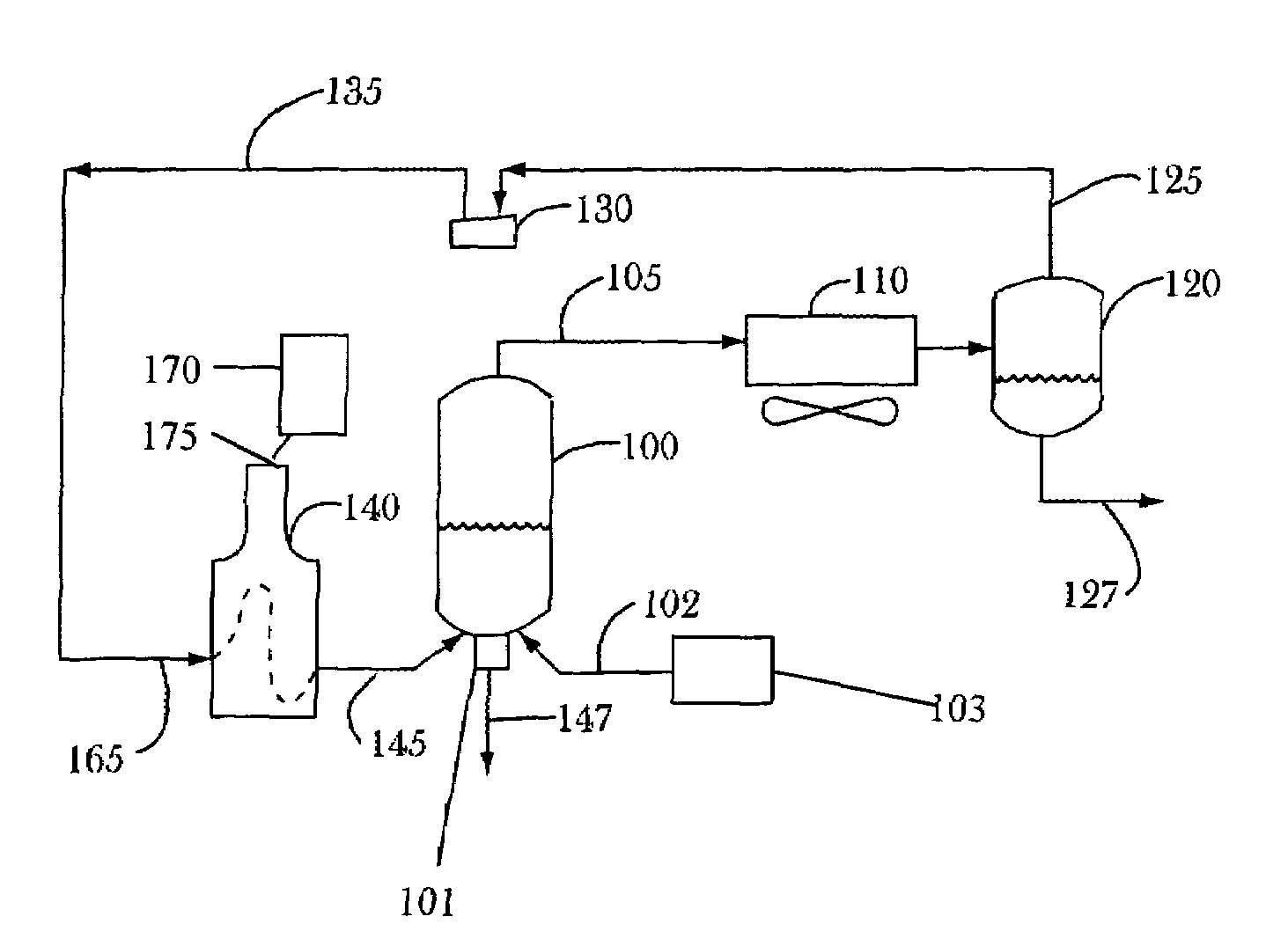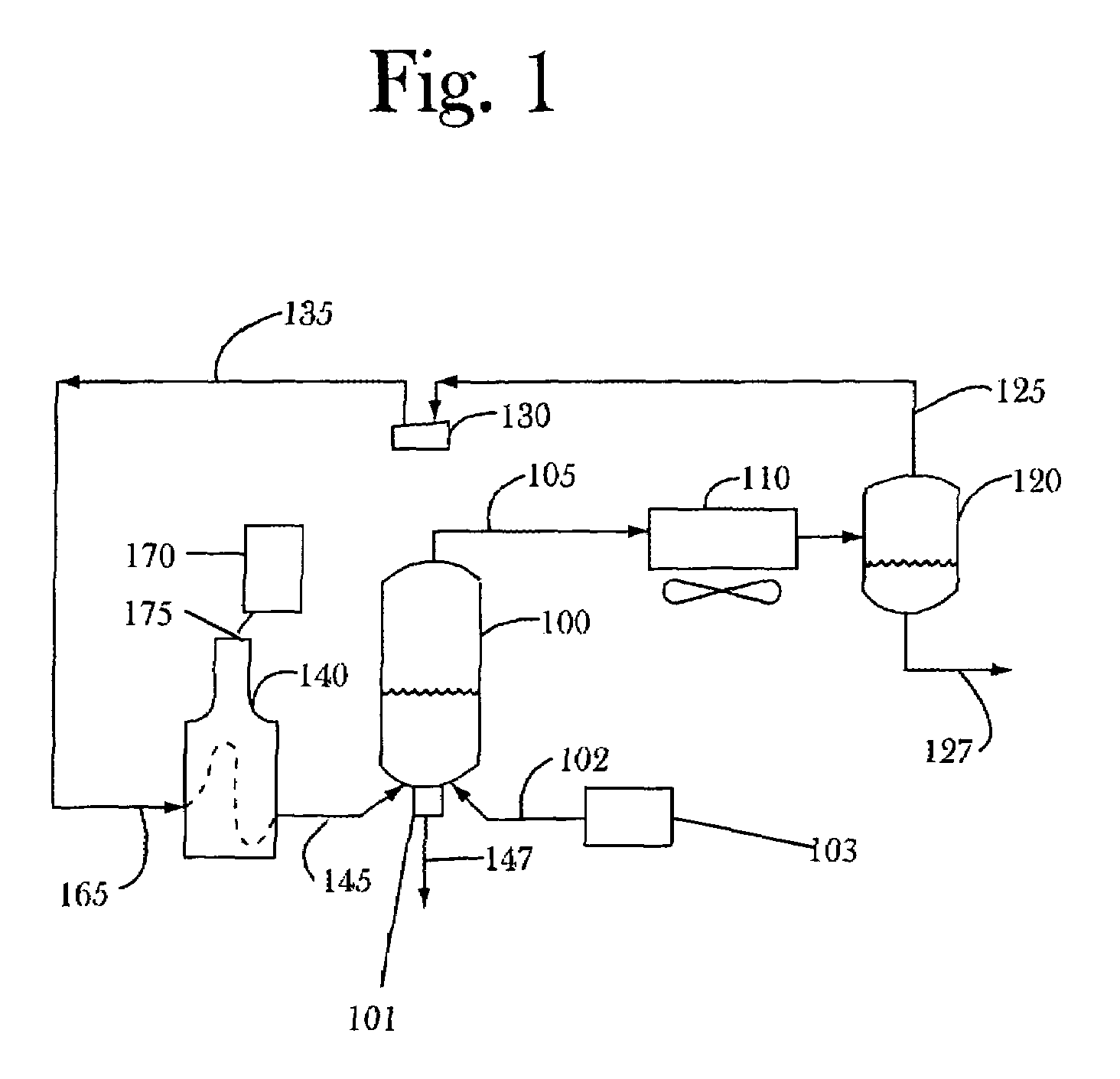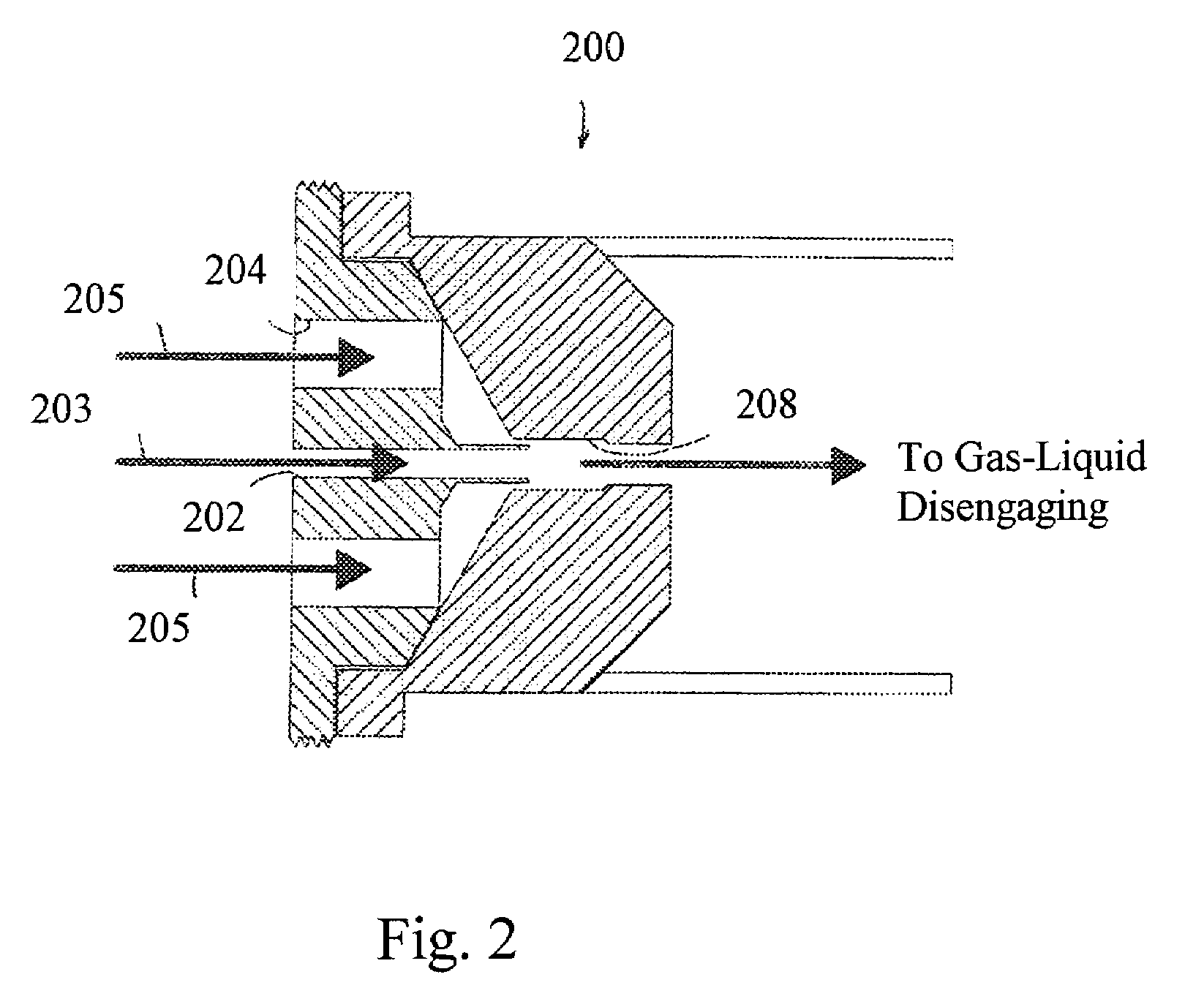Continuous oxidation and distillation process of heavier hydrocarbon materials
a technology of hydrocarbon materials and distillation processes, applied in the field of process, can solve the problems of difficult, if not impossible, processing, sticky residues of discarded oils, etc., and achieve the effect of low cost and low pressur
- Summary
- Abstract
- Description
- Claims
- Application Information
AI Technical Summary
Benefits of technology
Problems solved by technology
Method used
Image
Examples
example 1
Continuous Process
[0090]Heavier hydrocarbon material near ambient temperature was heated and then injected on the atomizing nozzle where the heavier hydrocarbon material was mixed rapidly with the superheated steam and reaction gas. The heavier hydrocarbon material reacted with the reaction gas to form the volatile overhead product. The oxidized heavier product separated from the steam-lighter overhead product mixture and flowed to a residue accumulator. The steam-light overhead mixture was cooled first to 225° F., where most of the overhead product condensed. The steam was condensed and collected in a water condensate accumulator. The process avoided indirect heat transfer while ensuring that the highest temperature the heavier hydrocarbon material reached was the atomizer outlet temperature. The atomized heavier hydrocarbon material was cooled quickly so residence time at atomizer temperature was short. Steam stripping allowed a lower flash temperature for a given amount of heavie...
PUM
| Property | Measurement | Unit |
|---|---|---|
| vaporization temperatures | aaaaa | aaaaa |
| superficial velocity | aaaaa | aaaaa |
| temperatures | aaaaa | aaaaa |
Abstract
Description
Claims
Application Information
 Login to View More
Login to View More - R&D
- Intellectual Property
- Life Sciences
- Materials
- Tech Scout
- Unparalleled Data Quality
- Higher Quality Content
- 60% Fewer Hallucinations
Browse by: Latest US Patents, China's latest patents, Technical Efficacy Thesaurus, Application Domain, Technology Topic, Popular Technical Reports.
© 2025 PatSnap. All rights reserved.Legal|Privacy policy|Modern Slavery Act Transparency Statement|Sitemap|About US| Contact US: help@patsnap.com



